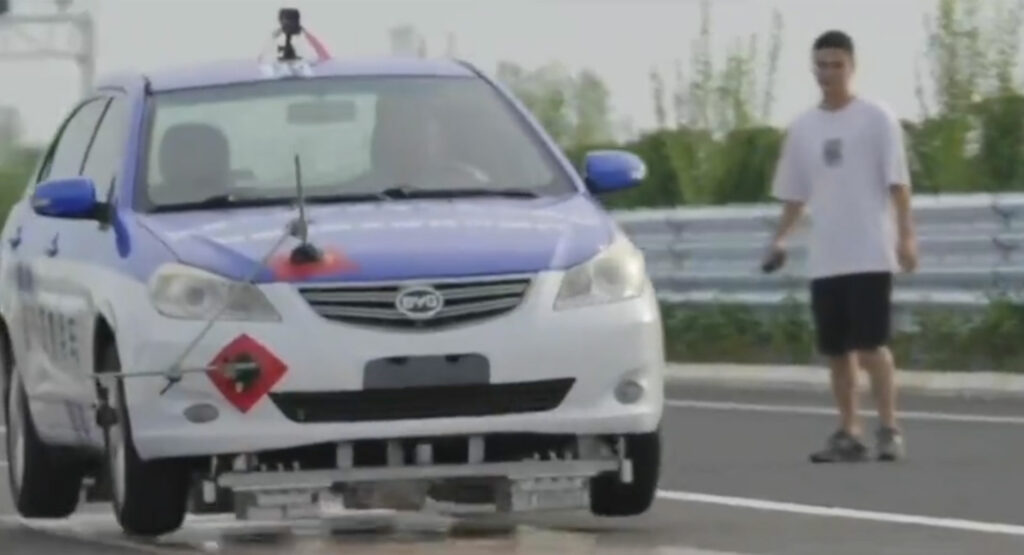Researchers from the Southwest Jiaotong University in China have developed cars that use magnetic levitation technology to float above a track.
The eight vehicles were recently tested in Jiangsu along a conductor rail that is almost five miles in length. The floors of the vehicles have been equipped with powerful magnets and float 35 mm above a conductor rail. One of the test vehicles reached up to 143 mph (230 km/h) during the test.
Maglev technologies have been used in trains for many decades and are particularly popular in China, Japan, and South Korea. China also operates a maglev train of its own that can travel at up to 373 mph (600 km/h). Chinese state news agency Xinhua says the maglev cars have been developed to study safety measures for high-speed driving but one of the university professors behind the vehicles, Deng Zigang, believes maglev technology can reduce energy usage of production cars and increase a vehicle’s operating range.
Read Also: Maglev Train Capable Of Hitting 370 MPH Unveiled Today In China
A #maglev vehicle technology test saw a 2.8-tonne car float 35 millimeters above the road and run on a highway in #Jiangsu, east China. A permanent magnet array was installed for levitation. pic.twitter.com/7vWc8TvJpn
— QinduoXu (@QinduoXu) September 12, 2022
Magnetic levitation could also reduce range anxiety among electric vehicle owners, CNBC notes.
Of course, there’s a big difference between developing and building some vehicles equipped with the technology and actually bringing cars like these to the market. Perhaps the most obvious challenge is that all-new infrastructure would have to be built to support vehicles like these, something that would cost an extraordinary amount of money.
Then there’s the challenge of actually ensuring that such vehicles provide a smooth ride. A video shared to Twitter shows one of the maglev cars moving along the conductor rail but it bounces quite significantly and doesn’t look particularly comfortable.




